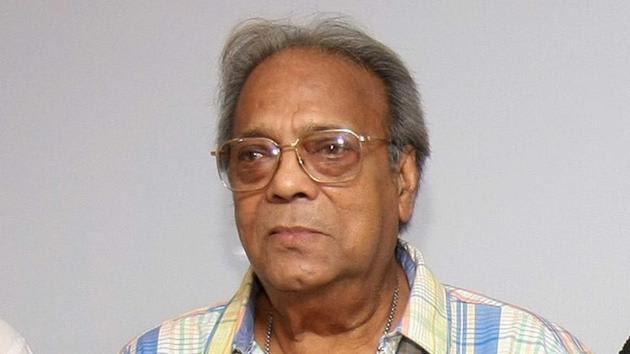
Nemai Ghosh, a master lensman also known as Oscar winner Satyajit Ray's "official photographer" in Kolkata's film circles, died at his residence in the city on Wednesday after prolonged illness. He was 87.
Ghosh, who was the still photographer in 20 of Ray's 36 films, was awarded the Padma Shri in 2010. He is survived by his wife Shibani, son Satyaki, and daughter Sharmistha.
His photographs of Kolkata's experimental theatre (during 1960s-1990s), capturing moments involving some of the most iconic (BENGALI) actors, have also earned him a place as a photo artiste.
Ghosh, whose camera chronicled an important part of Ray's life, has several books on photography and a memoir of Ray to his credit. His works have been exhibited in India and abroad, and are also in the collection of National Gallery of Modern Art.
"He had been unwell for quite some time, but started recovering. On Tuesday evening, he suddenly stopped eating and then developed lung congestions. He died at around 10am this morning. The doctor said he died of cardiac and respiratory failure," his brother, Chitta Ghosh, said on Wednesday.
Ghosh started working with Ray in the late 1960s; their first film together was the iconic Goopy Gyne Bagha Byne (1969). He continued working with Ray till his last film, Agantuk (1991) (He used to take production stills)
"For close to 25 years, Nemai Ghosh has been assiduously photographing me in action and repose — a sort of Boswell working with a camera rather than a pen," Ray wrote of Ghosh in the foreword of the lensman's first book of photographs (first book; compilation of photos of Ray), while referring to the Scottish biographer, James Boswell.
The book, titled "Satyajit Ray at 70", was published in 1991.
Ghosh met legendary French photographer Henri Cartier-Bresson in Paris in 1966 and became friends with him. Cartier-Bresson was also a favourite of Ray.
Ghosh's camera angle, the use of light and the ability to capture candid moments — the last quality is also the one for which Cartier-Bresson is known - earned Ghosh a stature of his own. He had often described theatre as his "first love" and his photographs carried elements of drama as well.
Cartier-Bresson, too, wrote a foreword to Ghosh's book "Satyajit Ray at 70".
"Through his visual gift, Nemai Ghosh allows us to be intimate with filmmaking, and to feel with great fidelity the drive, the alertness and the profundity of this giant of cinema in all his majestic stature," he wrote.
Ghosh's other books include "Dramatic Moments: Photographs and Memories of Calcutta Theatre from the Sixties to the Nineties" (2000), "Barefoot Light" (2002), "Ray and the Blind Painter: An Odyssey into the Inner Eye" (2004), "Satyajit Ray: A Vision of Cinema" (2005), "Manikda: Memories of Satyajit Ray" (2011), and Nemai Ghosh's Kolkata (2014).
Ghosh also worked with two other masters of Indian "new wave" cinema —in one film with Ritwik Ghatak and in three films with Mrinal Sen.
Ghosh was born in Kolkata in 1933 and married in 1957.
Ghosh's son, who too is a photographer in Mumbai, could not come to attend his father's funeral because of the country-wide lockdown due to Covid-19. Kolkata Police and the local administration helped the family with the cremation.
"Legendary photographer Nemai Ghosh is no more. Learnt a lot from Sir. A still from Jana Aranya (a Ray film). This is what we call photography," filmmaker Kamaleshar Mukherjee wrote on Facebook while sharing one of Ghosh's still photos from the set of a Satyajit Ray film.
Sign on to read the HT ePaper epaper.hindustantimes.com